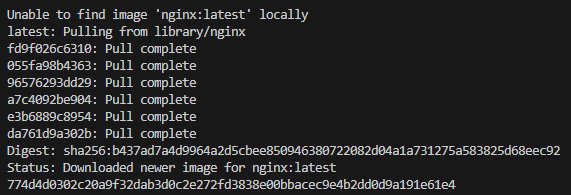Docker corresponds to an open-source platform to ease the deployment of applications. The “containers” are contained in Docker which avoids any external effect on the development environment. The exposing of ports comes into effect when enabling the communication of containers globally(to the outside world) or to the other containers.
This guide covers the below-stated aspects:
What is the Need for Exposing Ports?
When a container is created/made via “docker create” or “docker run” cmdlets, it does not publish its ports globally. Therefore, to enable the access of a port to the services outside Docker, or to the Docker containers that are not integrated with the container’s network, the “-P” or “-p” flags can be utilized. This makes a firewall rule that maps a container port to the Docker host’s port globally.
How to Expose Ports in Docker Containers?
To expose the ports in Docker Containers, apply the following steps:
Step 1: Create an “nginx” Container
First, create a nginx container regardless of any port mapping via the below-stated cmdlet:
Output
This cmdlet implies that a nginx image is pulled via the Docker Hub and creates a container.
Step 2: Analyze the Port
Now, check the port for the nginx container via the following command:
This outcome corresponds to the nginx container. Here, the “tcp” port is for port 80. However, it is not mapped yet.
Step 3: Check for Response From Localhost
Now, check if there is any response from the localhost:
From this outcome, it can be seen that the connection is refused as we don’t have port mapping allocated for port 80.
Step 4: Expose Port 3000 on Container
Now, expose port “3000” on container via the below-specified cmdlet:
Note: Once the port is exposed, it implies that this port can be mapped and re-mapped via the “-p” or “-P” flags.
Also, verify if port 3000 is open using the following cmdlet:
Step 5: Map the “TCP” and “UDP” ports
After, map the stated ports with the help of the below-stated cmdlet. Then, list all the Docker containers by executing the “docker ps” command:
docker ps
In the above-executed command, “80” refers to the port that will be executing on the host machine, and “8080” is the container port mapped with port 80.
Step 6: View the Port Mapping for the Container
Lastly, run the following cmdlet to view all the port mappings for the target container:
In the above-executed command, “94f55f7608a1” represents the target container’s id.
Conclusion
The ports can be exposed in Docker containers using the “-P” or “-p” flag. This makes a firewall rule that maps a container port to the Docker host’s port globally. Also, the port mappings for each container can be analyzed via the “docker container port” cmdlet referring to the target container’s ID. In this tutorial, we have demonstrated exposing ports in Docker containers.







